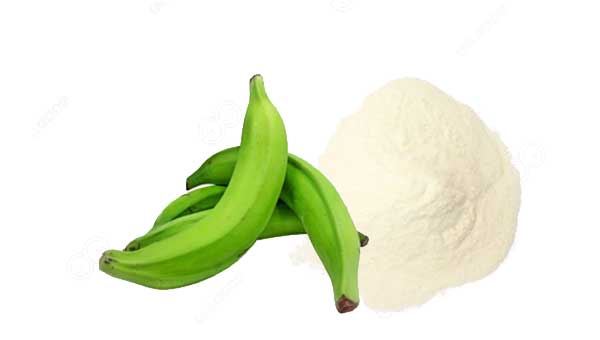Banana flour has emerged as a versatile and nutritious alternative to traditional wheat flour, gaining popularity among health-conscious consumers and those with dietary restrictions. Made from green, unripe bananas, banana flour is gluten-free, rich in essential nutrients, and has a mild, slightly nutty flavor. But do you know how do they process bananas into flour? The following are detailed processing steps.

Step 1: Sourcing the green bananas
The first step in the production of banana flour is sourcing the raw material – green, unripe bananas. These bananas are typically not suitable for direct consumption due to their starchy and slightly bitter taste. Therefore, they are often overlooked at the grocery store but become a valuable resource in the banana flour industry. Large-scale banana flour factories work closely with banana plantations, ensuring a steady supply of green bananas that might otherwise go to waste.
Step 2: Washing and peeling
Once the green bananas are sourced, they undergo a thorough cleaning process. This step removes any dirt, pesticides, or other contaminants from the fruit. After washing, the bananas are peeled. The peeling process can be done manually or using specialized machinery designed to efficiently remove the banana peels. The peeled bananas are now ready for the next stage.
Step 3: Slicing and drying
After peeling, the green bananas are sliced into small pieces. These slices are then laid out on trays or conveyor belts and transported to large drying chambers. The drying process is crucial as it removes the moisture from the bananas, transforming them into a dry, powdery substance. There are various drying methods, including air drying, freeze drying, and drum drying. The choice of method can impact the final quality of the banana flour. Typically, low-temperature drying methods are preferred to retain the maximum nutritional value.
Step 4: Milling and grinding
Once the sliced bananas are completely dried, they are transported to milling and grinding machines. These machines reduce the dried banana slices into a fine powder, which is what we know as banana flour. The grinding process ensures uniformity and consistency in the texture of the flour. Special attention is given to maintaining the temperature during grinding to prevent the flour from clumping or losing its nutritional value due to heat.
Step 5: Sifting and quality control
After the grinding process, the banana flour undergoes a sifting and quality control stage. This step involves passing the flour through fine screens or mesh to remove any remaining larger particles or impurities. Quality control measures are essential to ensure that the banana flour meets the desired standards for texture, flavor, and purity. Any substandard flour is discarded at this stage.
Step 6: Packaging
The final step in the process is packaging the banana flour. It is typically packed in airtight bags or containers to preserve its freshness and extend its shelf life. Proper packaging also helps protect the flour from moisture and external contaminants, ensuring it reaches consumers in the best possible condition.
The transformation of green, unripe bananas into fine, nutritious banana flour in a factory is a well-coordinated and precise process. From sourcing to packaging, each step plays a crucial role in ensuring the quality and purity of the final product. Banana flour’s rise in popularity is not only due to its gluten-free and nutrient-rich nature but also because of the sustainable use of green bananas that might otherwise go to waste. It is a very good opportunity to start a banana powder business now. If you are interested, you can contact us and we will send you the price of the banana flour production line.